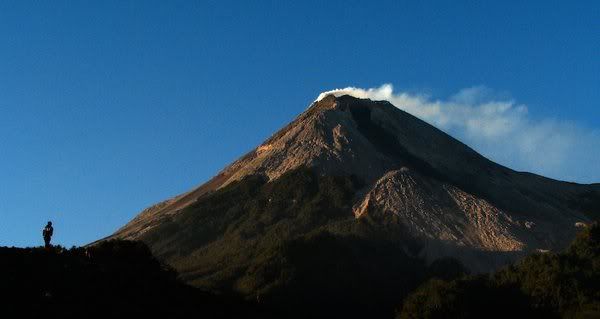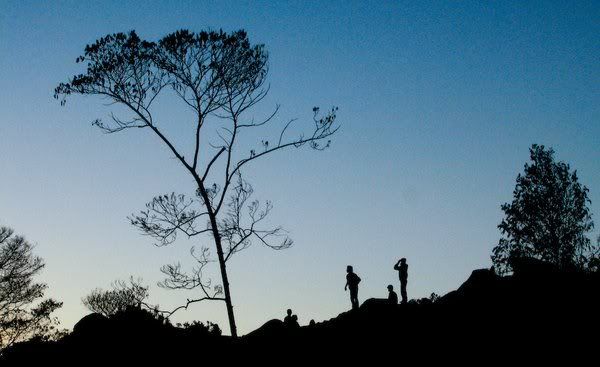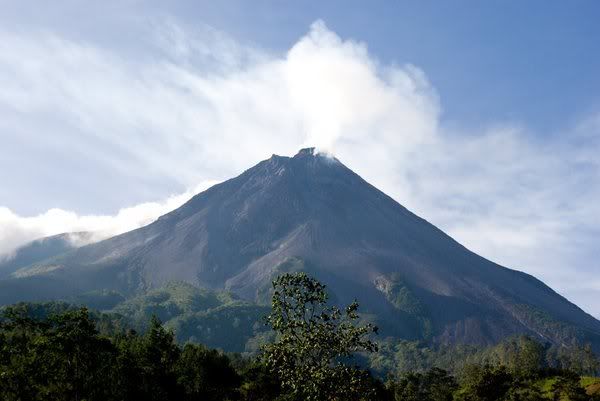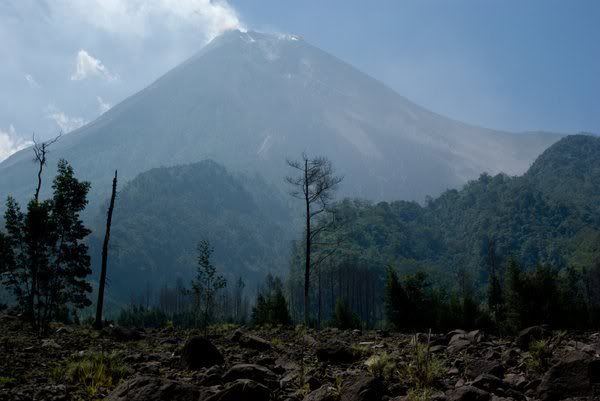BRIEF DESCRIPTION
Borobudur, or Barabudur, is a 8th-century near Magelang, Central Java, Indonesia. The monument comprises six square platforms topped by three circular platforms, and is decorated with 2,672 reliefs panels and 504 Budha statues. A main dome, located at the center of the top platform, is surrounded by 72 Buddha statues seated inside perforated stupa Approximately 42 kilometres northwest of Yogyakarta , Borobudur is located in an elevated area between two twin volcanoes, Sundoro-Sumbing and Merapi-Merbabu and two rivers, the Progo and the Elo. According to local myth, the area known as Kedu Plans is a Javanese sacred place and has been dubbed 'the garden of Java' due to its high agriculture fertility. Besides Borobudur, there are other buddhiste temples in the area, during the restoration in the early 20th century, it was discovered that three Buddhist temples in the region, Borobudur, Pawon and Mendut, are positioned along a straight line. It might be accidental, but the temples alignment is in conjunction with a native folk tale that a long time ago, there was a brick-paved road from Borobudur to Mendut with walls on both sides. The three temples (Borobudur–Pawon–Mendut) have similar architecture and ornamentation derived from the same time period, which suggests that ritual relationship between the three temples, in order to have formed a sacred unity, must have existed, although exact ritual process is yet unknown.
Borobudur, or Barabudur, is a 8th-century near Magelang, Central Java, Indonesia. The monument comprises six square platforms topped by three circular platforms, and is decorated with 2,672 reliefs panels and 504 Budha statues. A main dome, located at the center of the top platform, is surrounded by 72 Buddha statues seated inside perforated stupa Approximately 42 kilometres northwest of Yogyakarta , Borobudur is located in an elevated area between two twin volcanoes, Sundoro-Sumbing and Merapi-Merbabu and two rivers, the Progo and the Elo. According to local myth, the area known as Kedu Plans is a Javanese sacred place and has been dubbed 'the garden of Java' due to its high agriculture fertility. Besides Borobudur, there are other buddhiste temples in the area, during the restoration in the early 20th century, it was discovered that three Buddhist temples in the region, Borobudur, Pawon and Mendut, are positioned along a straight line. It might be accidental, but the temples alignment is in conjunction with a native folk tale that a long time ago, there was a brick-paved road from Borobudur to Mendut with walls on both sides. The three temples (Borobudur–Pawon–Mendut) have similar architecture and ornamentation derived from the same time period, which suggests that ritual relationship between the three temples, in order to have formed a sacred unity, must have existed, although exact ritual process is yet unknown.
Long Description
Borobudur is one of the greatest Buddhist monuments in the world. Founded by a king of the Saliendra dynasty, it was built to honour the glory of both the Buddha and its founder, a true king Bodhisattva. The name Borobudur is believed to have been derived from the Sanskrit words vihara Buddha uhr, meaning the Buddhist monastery on the hill. Borobudur temple is located in Muntilan, Magelang, and is about 42 km from Yogyakarta city.
This colossal temple was built between AD 750 and 842: 300 years before Cambodia's Angkor Wat, 400 years before work had begun on the great European cathedrals. Little is known about its early history except that a huge army of workers worked in the tropical heat to shift and carve the 60,000 m3 of stone. At the beginning of the 11th century AD, because of the political situation in Central Java, divine monuments in that area, including the Borobudur Temple became completely neglected and given over to decay. The Sanctuary was exposed to volcanic eruption and other ravages of nature. The temple was not rediscovered until the 19th century. A first restoration campaign, supervised by Theodor van Erp, was undertaken shortly after the turn of the century. A second one was led more recently (1973-82).
A harmonious marriage of stupas, temple-mountain and the ritual diagram, this temple complex was built on several levels around a hill which forms a natural centre. The first level above the base comprises five square terraces, graduated in size and forming the base of a pyramid. Above this level are three concentric circular platforms crowned by the main stupa. Stairways provide access to this monumental stupa. The base and the balustrades enclosing the square terraces are decorated in reliefs sculpted in the stone. They illustrate the different phases of the soul's progression towards redemption and episodes from the life of Buddha. The circular terraces are decorated with no fewer than 72 openwork stupas each containing a statue of Buddha.
Stylistically the art of Borobudur is a tributary of Indian influences (Gupta and post-Gupta styles). The walls of Borobudur are sculptured in bas-reliefs, extending over a total length of 6 km. It has been hailed as the largest and most complete ensemble of Buddhist reliefs in the world, unsurpassed in artistic merit, each scene an individual masterpiece. The narratives reliefs on the main walls read from the right to left, those on the balustrade from left to right. This was done for the purpose of the Pradaksina, the ritual circumambulation which the pilgrims make moving on the clockwise and keeping the sanctuary to the right.
The Karmawibangga reliefs on the hidden foot are devoted to the law of karma. The Lalitavistara series do not provide a complete biography of the Buddha, from the Hushita heaven and end his sermon in the Deer Park near the Benares. Jataka are stories about the Buddha before he was born as Prince Sidharta. Awadana are similar to Jataka, but the main figure is not the Boddhisatva, and the saintly deeds are attributed to other legendary persons.
The stories are compiled in the Dvijavadana (Glorious Heavenly Acts) and the Awadana Sataka (Hundred Awadanas). The first twenty panels in the lower series of the first gallery depict, the Sudhanakumaravadana. The series of reliefs covering the wall of the second gallery is devoted to Sudhana's tireless wanderings in search of the Highest Perfect Wisdom. The story is continued on the wall and balustrade of the third and fourth galleries. Its depiction in most of the 460 panels is based on the holy Nahayana text Gandavyuha, the concluding scenes being derived from another text, the Badracari.











 Read more: http://epg-studio.blogspot.com/2009/06/widget-pengatur-halaman-untuk-kembali.html#ixzz1UA3ocoWT
Read more: http://epg-studio.blogspot.com/2009/06/widget-pengatur-halaman-untuk-kembali.html#ixzz1UA3ocoWT